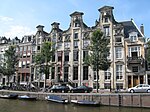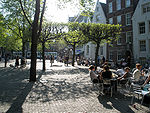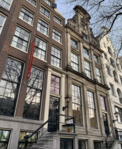Boekman Foundation

The Boekman Foundation Institute for arts, culture and related policy (Dutch: Boekmanstichting Kenniscentrum voor kunst, cultuur en beleid) is a research institute for Dutch arts and culture policy and practice. It was named after the Amsterdam SDAP politician and alderman Emanuel Boekman (1889–1940), who promoted public support for art and culture in his PhD thesis of 1939. The Boekman Foundation was established in 1963 by Dutch cultural philosopher Jan Kassies (nl) and compiles and analyses statistical and other data on art and culture in the Netherlands for policy purposes. Its main periodical publications are the quarterly Boekman cultural magazine since 2003 and the annual national review report Culture Monitor (Cultuurmonitor) with an online dashboard resource. The Foundation hosts a free expertise database and library Kennisbank on art, culture and related policy with 85,000 titles in 2024.
Excerpt from the Wikipedia article Boekman Foundation (License: CC BY-SA 3.0, Authors, Images).Boekman Foundation
Herengracht, Amsterdam Centrum
Geographical coordinates (GPS) Address Nearby Places Show on map
Geographical coordinates (GPS)
| Latitude | Longitude |
|---|---|
| N 52.3675 ° | E 4.8875 ° |
Address
Herengracht 419A
1017 BP Amsterdam, Centrum
North Holland, Netherlands
Open on Google Maps











